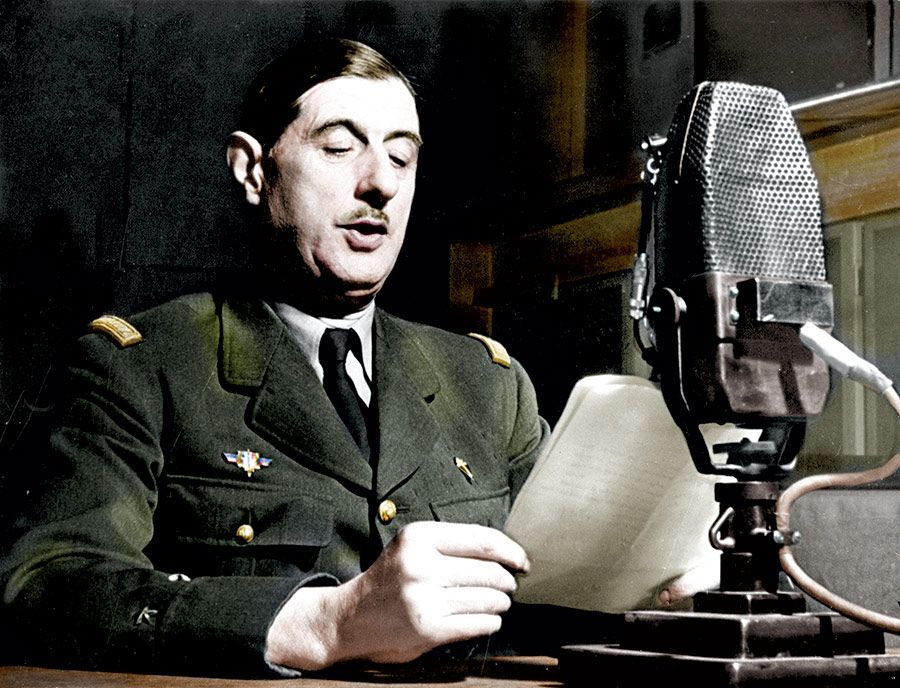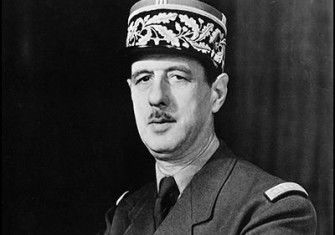‘The French Resistance’ by Olivier Wieviorka review
From de Gaulle’s call to arms against Vichy France to Liberation four years later, we review The French Resistance by Olivier Wieviorka.

At 6pm on 18 June 1940, a relatively unknown French two-star general, Charles de Gaulle, composed himself in front of a microphone at the BBC’s Broadcasting House in London and began a speech. Lasting less than six minutes, his words were an impassioned rejection of the armistice with Nazi Germany, which had been announced the day before by Marshal Pétain, prime minister and soon to be head of state of the collaborationist Vichy regime. Bristling with intent, de Gaulle was adamant that the Fall of France was just one battle and not the whole war, which he predicted would become a world war. Broadcast at 10pm, the speech was not obviously political. Rather it was a call to arms, aimed at the French military.
Few French people responded to de Gaulle’s plea, principally because it was difficult not to accept Pétain’s logic that Nazi Germany had won. Indeed, most saw de Gaulle as irrelevant, preferring to embrace Pétain as the saviour figure whose authoritarian antisemitic regime, based in the central spa town of Vichy, enjoyed mass support in autumn 1940.
However, after the Second World War, de Gaulle’s speech of 18 June 1940 became enshrined in French history as the starting point of the French Resistance, which led directly to the Liberation four years later. This founding narrative allowed French people to forget the humiliation of Nazi Occupation and rebuild national self-esteem.
In reality, as Olivier Wieviorka shows in his compelling study, the speech was only one starting point for the Resistance, namely de Gaulle’s Free French Movement in London.
Throughout France, grassroots groups sprung up in late 1940 and 1941, independently of de Gaulle and of one another. Admittedly these groups were tiny in number and not all of them were necessarily military in character. In fact, many focused on the production of a clandestine press that challenged the Vichy regime and Nazism in terms of ideas. Furthermore, there was the ambiguous stance of the Communist Party, which, given the August 1939 Nazi-Soviet Non-Aggression Pact, did not enter into full-blown anti-Nazi resistance until Germany’s invasion of the Soviet Union on 22 June 1941.
Wieviorka charts the minutiae of these multiple beginnings with skill, outlining how this diversity explains the resentments, rivalries and political divisions between the different groups, not least the tension between de Gaulle in London and those fighting the Nazis at the sharp end in France. In particular, Wieviorka shows how, although the Resistance was united behind de Gaulle in May 1943, there was always suspicion on the part of the Gaullists towards the Communist Party. They feared that communist resisters had a secret plan to turn the defeat of Nazi Occupation into revolutionary insurrection and, for this reason, de Gaulle carefully controlled the choreography of the liberation of Paris at the end of August 1944, ensuring that he alone became the symbol of re-found national unity.
From the outset Wieviorka underlines his disciplinary credentials. As a historian his mission is to strip back the myths and legends to arrive at a balanced interpretation of what has always been a highly emotive subject. To this end the book is defined by rigour and his arguments are backed up by a wealth of facts and figures. Thus he shows how the greatest repression took place right at the end of the Occupation. With the war turning decisively against them, Nazi violence intensified, which meant that the 21,600 deported to concentration camps between D-Day on 6 June 1944 and the end of November 1944 represented almost a third of all deportees for the whole four-year period. Then, in the weeks before final defeat in May 1945, the Nazis rounded up Resistance leaders, such as Charles Delestraint, and shot them, usually in the back of the neck.
Wieviorka is especially good on how radio became a key battleground of ideas. In London, de Gaulle had to fight for access to the airwaves via the BBC’s noon news, eventually winning a daily five-minute slot from December 1940 onwards, which then became a crucial platform. During 1942, three million people tuned in to de Gaulle, which, Wieviorka says, explains why the Nazi and Vichy authorities did everything in their power to deter listening, ranging from jamming broadcasts through to the threat of imprisonment.
There is also a highly perceptive chapter on the sociology of resistance. After 1945, Gaullists and Communists fervently maintained that the majority of French people contributed to the Resistance. Such claims, Wieviorka emphasises, were a gross distortion of the truth, motivated by the desire to win political ascendency in the postwar period. The ‘army of the shadows’ was always a minority phenomenon, amounting to something between 300,000 and 500,000 women and men out of a population in 1945 of 39.6 million. Here, Wieviorka explores the logic of Resistance-engagement in terms of class, underlining how the numerical presence of the working class reflected the weight of the Communists. Moreover, the working class could draw upon a long-established culture of resistance, which included demonstrations, strikes and violent confrontation. Equally, though, there was a strong middle-class presence (teachers, doctors, academics) because, particularly at the beginning, proficiency in the written word was crucial in establishing the underground press, added to which was the massive role of foreigners. Thus of the 120,000 Spaniards who fled the Franco regime in 1939, many joined the Resistance on the grounds that this was a continuation of their anti-fascist struggle.
However, this study is very much a history of the Resistance in metropolitan France. There is no consideration of how the French Resistance played out in France’s empire. Similarly, some of the translation reads awkwardly, not least references to women as ‘the fairer sex’. That said, this is an impressive synthesis which, alongside the work of Roderick Kedward, Hannah Diamond and Robert Gildea, is now one of the starting points for understanding the French Resistance.
The French Resistance
Olivier Wieviorka, Translated by Jane Marie Todd
Harvard University Press 592pp £36
Buy from bookshop.org (affiliate link)
Martin Evans is Professor of Modern European History at Sussex University. He is curating the exhibition Paris-London: Global Music Connections, which will open in March 2019 at the French National Museum of the History of Immigration, Paris.






